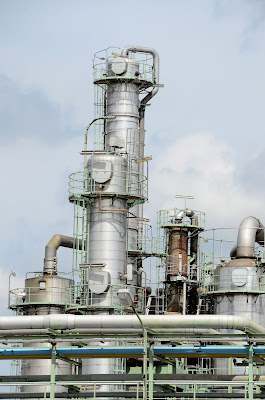This guide is for those who want to learn about piping engineering design and how it can be used for product development. Piping engineering is one of the most important aspects of any industrial company. How will your product flow without pipes?
Why should you care about piping engineering design? Well, here are some reasons why:
-It can save you time and money in production
-It gives you more accurate results
-It reduces the risk of leaks and spills
-It will improve the quality of your product
Piping engineering design is one of the most important fields in the manufacturing process. It ensures that the product will be able to function as designed.
Design engineers are responsible for designing product components, including piping layout, pipe sizing, pipe bends, flanges, valves, and fittings.
An important consideration in piping engineering design is how it will be used to develop the product.
 |
| Photo by SELİM ARDA ERYILMAZ on Unsplash |
Introduction: What is Piping Engineering Design?
Piping engineering design is the design and construction of piping systems, with a focus on safe and robust operation. Piping engineering encompasses all aspects of piping design, including the selection, preparation, layout, installation, testing, commissioning, and maintenance of pipeline networks.
Piping engineering is challenging because it involves many complex disciplines. For example, mechanical engineers are responsible for ensuring that pipes can withstand significant internal pressures while civil engineers are responsible for ensuring that pipelines can withstand external pressures. Piping engineers also have to take environmental factors into account when designing piping systems.
Piping engineering design can be defined as the process of designing, modeling, and selecting the material for the piping system. It includes establishing requirements, collecting data and information, generating ideas, analyzing alternatives, and selecting solutions. Piping engineers must ensure that their designs are safe for use in a variety of conditions including extreme temperatures. They also need to ensure that they comply with safety standards in every country they are used in.
What are the Goals of Piping Engineering Design?
When designing piping, several objectives should be achieved. The main objectives are to keep the system performing well and minimize the cost of production.
Other goals should be achieved as well, such as meeting regulatory standards and safety requirements. This is all done by working with different stakeholders to ensure that the design meets their needs. By understanding what each stakeholder needs, helps engineers meet their design goals efficiently and with a high quality of work.
Piping Engineering Design is done by a systems engineer. The goals of piping engineering design are to ensure pipework is safe for transport, easy to construct, economical to manufacture, and able to be installed without disruption to existing piping systems.
The engineer faces several constraints on the piping design. There are always limitations on weight and space, as well as safety risks due to hazardous materials being transported through pipelines.
What are the 5 Major Components of Pipe Systems Design?
The design of a pipe system involves five major components:
- Piping: both the piping and fluid,
- Flow stream: this is the liquid or gas that is flowing,
- System boundary: this is the delineation of the pipe system,
- Controls: these are mechanisms to adjust and control the flow of liquid or gas through a pipeline, and
- Environment: this is everything that surrounds a pipe system.
 |
| Photo by Paul Teysen on Unsplash |
Design Considerations for the Pipe System.
As a mechanical designer, it is important to consider the designs of the pipe system. Numerous considerations should be made to ensure that such a system functions properly and efficiently. These include:
- The pressure rating of the pipes
- The type of fluids being transferred
- Pipe size and material
- Pipe routing
- The distance between pipes






0 Comments